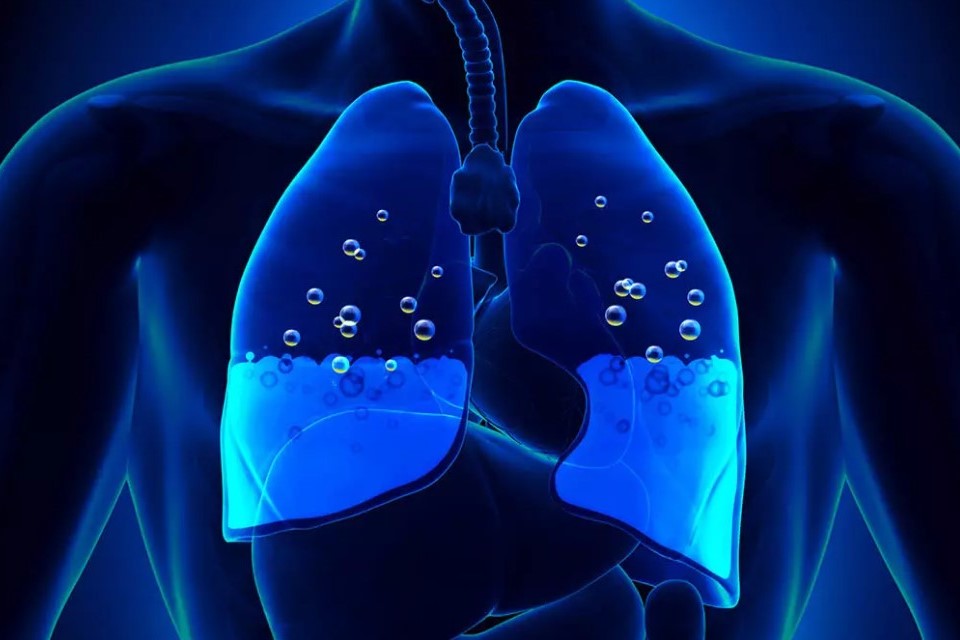
Pleural effusion: what it is, what causes it and how to prevent it
Pleural effusion is a clinical condition characterised by excessive accumulation of fluid within the pleural cavity
The pleural cavity is a very thin space between the visceral pleura (the serous membrane that adheres to the outer lung wall and thus interposes itself between the organs of the mediastinum and the lungs internally) and the parietal pleura (the serous membrane that lines the thoracic cavity from the inside and the upper face of the diaphragm, thus interposing itself between the osteo-muscular thoracic wall and the lungs externally).
What is pleural effusion?
The pleural fluid between the visceral and parietal pleura allows these two membranes to slide over each other during respiratory acts and prevents the lung from collapsing (under physiological conditions, the pressure inside the pleural fluid is lower than the ambient pressure precisely to prevent this condition from occurring).
Pleural effusion represents inadequate disposal (exudate pleural effusion) or excessive production (exudate pleural effusion) of this fluid.
The effusion may be unilateral or bilateral; it may occupy the large pleural cavity or be localised in a circumscribed part of the pleural space.
What are the causes of pleural effusion?
There are several causes of pleural effusion.
There are two types of pleural effusion that can develop: transudate-type pleural effusions – or ‘exudates’ – and exudate-type pleural effusions – or ‘exudates’.
The exudate-type pleural effusion forms due to altered factors (hydrostatic and oncotic forces) that influence the formation or reabsorption of pleural fluid (pleuras in the presence of exudate-type effusion are healthy).
These include:
- hyperhydration,
- pulmonary venous hypertension
- systemic venous hypertension
- liver cirrhosis
- nephrotic syndrome
Pleural effusions of the exudate type are an expression of infectious-inflammatory processes.
They arise due to the alteration of the mechanisms responsible for the filtration and reabsorption of pleural fluid.
Causes that may be at the origin of these include:
- infectious or inflammatory processes affecting the lung
- pulmonary embolism
- acute pancreatitis
- neoplasms
- rheumatoid arthritis
- syndrome following cardiac injury
- fungal pleurisy
- subdiaphragmatic abscess
- exposure to asbestos
What are the symptoms of pleural effusion?
The symptoms that characterise pleural effusion vary depending on the amount of fluid present in the pleural cavity and the rate at which it accumulates.
Among the most frequent symptoms are:
- dyspnoea (difficulty breathing)
- chest pain
- coughing
How can pleural effusion be prevented?
Unfortunately, there is not much that can be done to prevent the formation of a pleural effusion.
However, maintaining a healthy lifestyle based on a balanced diet and moderate physical activity can help keep the body healthy.
Remember to keep alcohol consumption to a minimum and not to smoke.
Read Also:
Emergency Live Even More…Live: Download The New Free App Of Your Newspaper For IOS And Android
Pleuritis, Symptoms And Causes Of Pleural Inflammation
Airway Management After A Road Accident: An Overview
Pneumothorax And Haemothorax: Trauma To The Thoracic Cavity And Its Consequences
What Is Empyema? How Do You Deal With A Pleural Effusion?
Pain Management In Blunt Thoracic Trauma
Acute Hyperinflammatory Shock Found In British Children. New Covid-19 Pediatric Illness Symptoms?
What Is Transient Tachypnoea Of The Newborn, Or Neonatal Wet Lung Syndrome?
Traumatic Pneumothorax: Symptoms, Diagnosis And Treatment
Diagnosis Of Tension Pneumothorax In The Field: Suction Or Blowing?
Pneumothorax And Pneumomediastinum: Rescuing The Patient With Pulmonary Barotrauma
Kaposi’s Sarcoma: Discover What It Is
Pneumonia: Causes, Treatment And Prevention
Pneumothorax And Pneumomediastinum: Rescuing The Patient With Pulmonary Barotrauma
Bronchitis And Pneumonia: How Can They Be Distinguished?
AIDS, Difference Between HIV1 And HIV2
HIV: How Soon Do Symptoms Appear? The 4 Stages Of Infection
Endotracheal Intubation: What Is VAP, Ventilator-Associated Pneumonia
Pneumocystis Carinii Pneumonia: Clinical Picture And Diagnosis
Diagnosis And Prevention Of Pneumonia


